- 0 Shopping Cart


Crossrail London Case Study
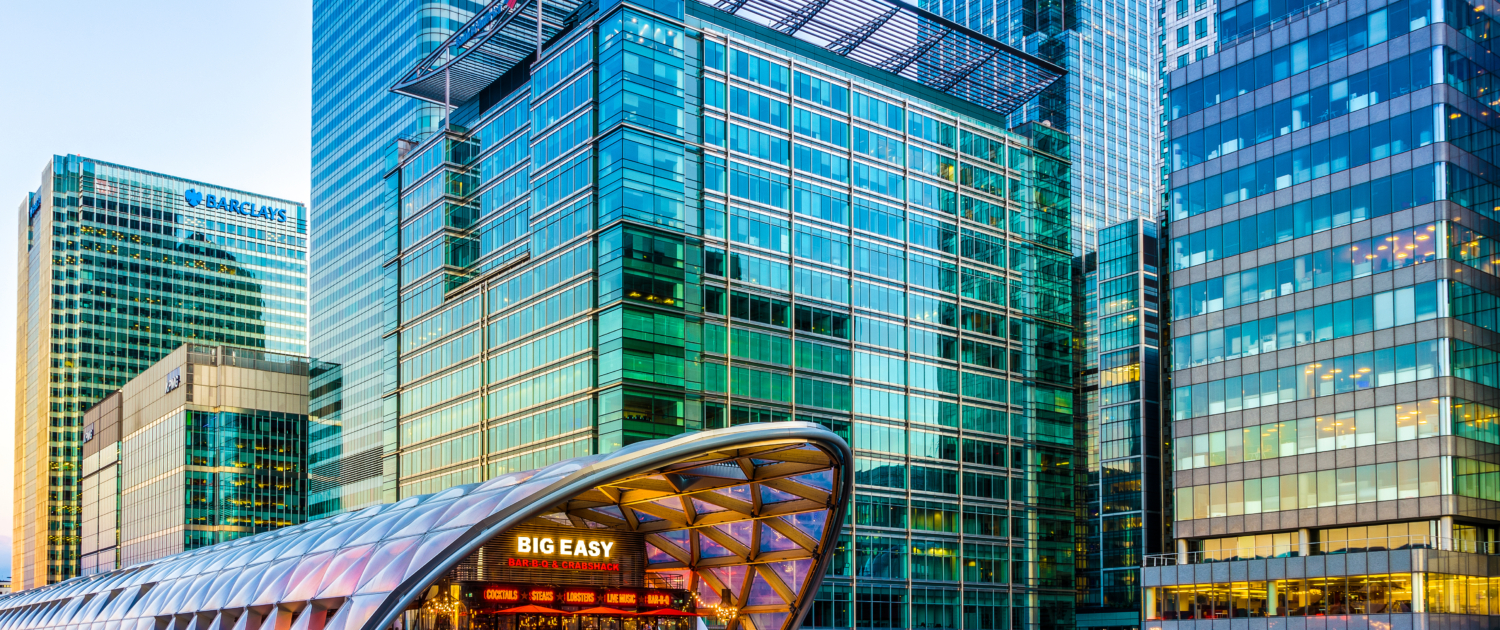
Crossrail is an example of how urban change has created integrated transport opportunities. This is one of a collection of four case studies covering social, economic and environmental opportunities resulting from urban change in London .
Crossrail Case Study – Transport in London
London has a comprehensive, integrated travel system. This is a network of transport systems which link to one another to increase the use of public transport to help reduce traffic congestion and CO2 emissions;
London Underground – the new Elizabeth line links central London to the Suburbs, encouraging more people to use public transport.
Oyster Card is a travel payment method that people can use on buses, trains and tubes quickly and efficiently; you can now use a bank card.
Congestion Charging Zone – A £15 daily fee to any vehicle travelling in central London between 7 am and 6 pm, Monday to Friday and 12-6 pm on weekends. This encourages more people to use public transport.
Bike sharing scheme – Self-hire bikes are available in many public places in London for as little as free for 30 mins. This has encouraged many people to cycle rather than drive, reducing traffic congestion.
Why is there a need for improved transport in London?
London’s transport system is well-integrated but struggles to keep up with the increasing number of passengers due to population growth and more work opportunities. Public transportation is preferred as most Londoners cannot rely on driving due to limited parking and traffic congestion. In 2014, approximately 75 million people used underground trains and buses in London per week, which continues to rise yearly.
Transport improvements in London
The demand for public transportation is predicted to increase by 60 per cent by 2050, making long-term planning and investment essential.
Launched in 2022, Crossrail is a recently built rail system that spans from east to west London and connects Shenfield and Abbey Wood in the east with Reading and Heathrow in the west. Upon completion, the rail system, renamed the Elizabeth line, runs underground through the city centre. It is expected to decrease travel times and bolster overall passenger capacity.
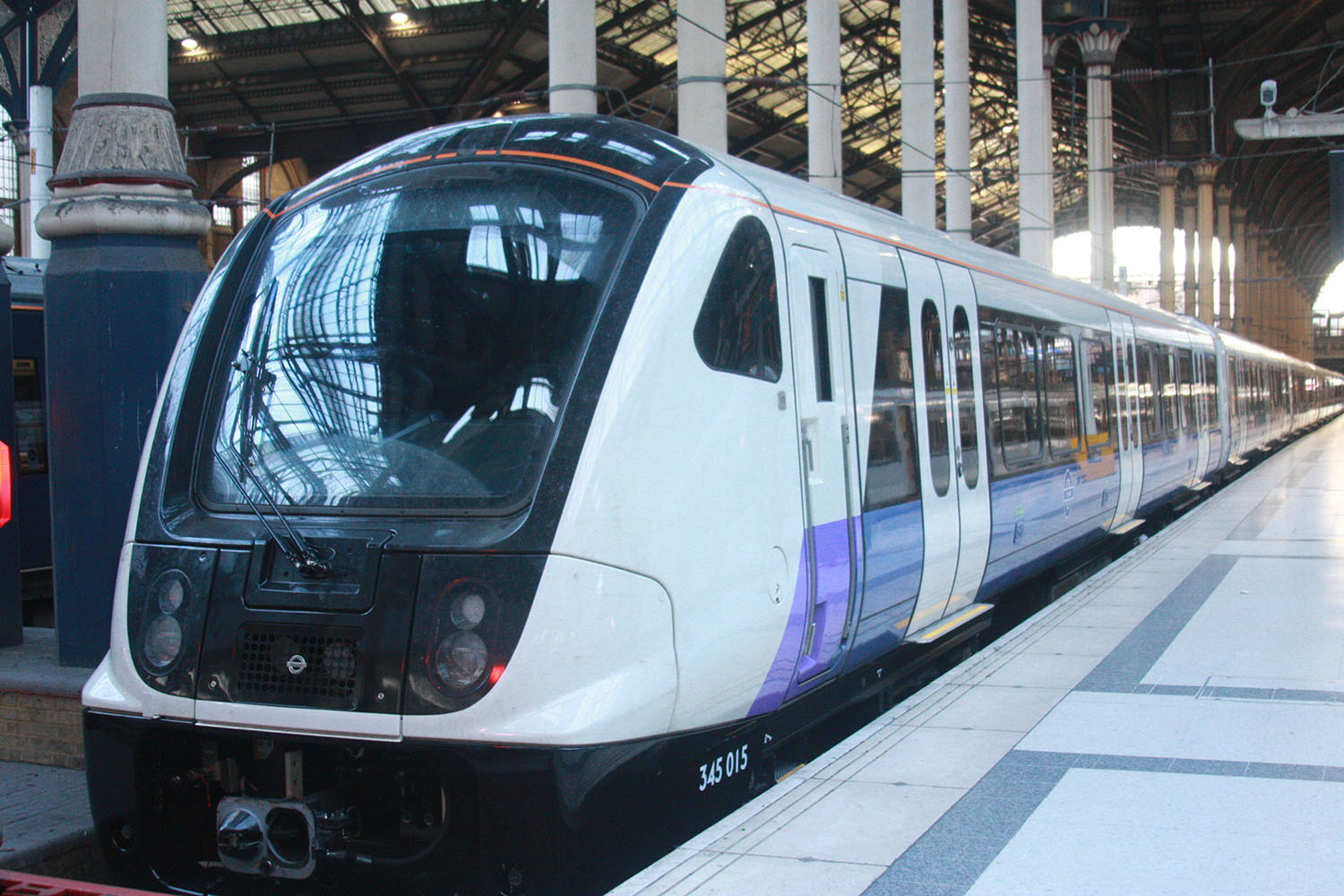
Plans for Crossrail 2 are already in motion, with a projected timeline of 2030. This second project would involve constructing a north-south rail system across London that is similar in scope and design to the first.
What could the impacts of Crossrail be for London?
Crossrail, one of the largest infrastructure projects in London’s history, is expected to deliver numerous advantages, including:
- Significantly reducing journey times, such as the trip from Liverpool Street to Heathrow, which will decrease from over an hour to just 35 minutes.
- Raising the number of rail passenger journeys in London by 200 million annually, resulting in a ten per cent increase.
- Enabling an extra 1.5 million individuals to commute to work in central London within a 45-minute timeframe. • Improving the transportation system in London by providing more connections with the Underground network.
- Boosting property values by approximately 25% in areas around stations along the Crossrail path.
- Stimulating further regeneration throughout London, providing access to thousands of additional employment opportunities.
- Enhancing accessibility for disabled individuals to new stations. There are no stairs from the platform to the street level.

Premium Resources
Please support internet geography.
If you've found the resources on this page useful please consider making a secure donation via PayPal to support the development of the site. The site is self-funded and your support is really appreciated.
Related Topics
Use the images below to explore related GeoTopics.
London Docklands Case Study
Topic home, urban greening in london, share this:.
- Click to share on Twitter (Opens in new window)
- Click to share on Facebook (Opens in new window)
- Click to share on Pinterest (Opens in new window)
- Click to email a link to a friend (Opens in new window)
- Click to share on WhatsApp (Opens in new window)
- Click to print (Opens in new window)
If you've found the resources on this site useful please consider making a secure donation via PayPal to support the development of the site. The site is self-funded and your support is really appreciated.
Search Internet Geography
Top posts and pages.
Latest Blog Entries
Pin It on Pinterest
- Click to share
- Print Friendly
Cookies on GOV.UK
We use some essential cookies to make this website work.
We’d like to set additional cookies to understand how you use GOV.UK, remember your settings and improve government services.
We also use cookies set by other sites to help us deliver content from their services.
You have accepted additional cookies. You can change your cookie settings at any time.
You have rejected additional cookies. You can change your cookie settings at any time.
- Housing, local and community
- Planning and building
Crossrail - Improving infrastructure delivery: Case study
This is a Crossrail case study associated with Improving infrastructure delivery: project initiation roadmap.
IUK Routemap Case Study Crossrail
PDF , 574 KB , 11 pages
This file may not be suitable for users of assistive technology.
Case studies of projects that are using the framework Improving infrastructure delivery: project initiation routemap .
Related content
Is this page useful.
- Yes this page is useful
- No this page is not useful
Help us improve GOV.UK
Don’t include personal or financial information like your National Insurance number or credit card details.
To help us improve GOV.UK, we’d like to know more about your visit today. Please fill in this survey (opens in a new tab) .
Case 8: London Cross Rail Project
- First Online: 04 May 2022
Cite this chapter

- B Rajesh Kumar 2
Part of the book series: Management for Professionals ((MANAGPROF))
1934 Accesses
In the nineteenth century, the Regents Canal company highlighted the important role railways will play in London in future. Crossrail Ltd. was established in the year 2001 to build the new railway line known as the Elizabeth line through central London. The initial budget for the project was set at £154 million. Crossrail Limited is the wholly owned subsidiary of Transport for London (TfL). The company was established as a 50/50 joint venture company between Transport for London and the Department for London. The Crossrail project is currently Europe’s largest infrastructure project in Europe. The new Elizabeth line will be fully integrated with London’s existing transport and will be operated by Transport for London. The Elizabeth line will increase central London capacity by 10% and reduce congestion at many London underground stations. In a span of 3 years, eight giant tunnel boring machines had burrowed below the streets of London to construct the 42 km new rail tunnels. Over 200,000 tunnel segments were used to line the 42 km of tunnels. The final estimated amount of funding for the project amounted to £17.8 billion. The principal risks to which the project is exposed include safety programme delivery, commercial, organizational, stakeholder and financial risks.
This is a preview of subscription content, log in via an institution to check access.
Access this chapter
- Available as EPUB and PDF
- Read on any device
- Instant download
- Own it forever
- Compact, lightweight edition
- Dispatched in 3 to 5 business days
- Free shipping worldwide - see info
- Durable hardcover edition
Tax calculation will be finalised at checkout
Purchases are for personal use only
Institutional subscriptions
Further Reading
https://www.crossrail.co.uk/news/articles/crossrail-project-update
https://www.crossrail.co.uk/news/publications
https://www.crossrail.co.uk/news/crossrail-in-numbers
https://www.crossrail.co.uk/project/our-plan-to-complete-the-elizabeth-line/
Shadow Strategic Rail Authority East West Report 2000
Google Scholar
Crossrail Annual Report 2020
https://www.railway-technology.com/projects/crossrail/
https://www.bbc.com/news/uk-england-london-53054052
Ed Owen, Crossrail enabling works frameworks announced, https://www.newcivilengineer.com/latest/crossrail-enabling-works-frameworks-announced-09-04-2009/
Gerald Neil, Work officially starts on Crossrail, Contract Journal, 15 May 2009.
Peter MacLennan, Crossrail award major tunneling contracts worth £ 1.25 billion, https://www.crossrail.co.uk/news/articles/crossrail-awards-major-tunnelling-contracts-worth-125bn
https://www.bbc.com/news/uk-england-kent-22168938
http://www.tunnelsonline.info/news/tfl-takes-on-tuca-230317-5769436/
Download references
Author information
Authors and affiliations.
Dubai International Academic City, Institute of Management Technology, Dubai, United Arab Emirates
B Rajesh Kumar
You can also search for this author in PubMed Google Scholar
Rights and permissions
Reprints and permissions
Copyright information
© 2022 The Author(s), under exclusive license to Springer Nature Switzerland AG
About this chapter
Kumar, B.R. (2022). Case 8: London Cross Rail Project. In: Project Finance. Management for Professionals. Springer, Cham. https://doi.org/10.1007/978-3-030-96725-3_12
Download citation
DOI : https://doi.org/10.1007/978-3-030-96725-3_12
Published : 04 May 2022
Publisher Name : Springer, Cham
Print ISBN : 978-3-030-96724-6
Online ISBN : 978-3-030-96725-3
eBook Packages : Economics and Finance Economics and Finance (R0)
Share this chapter
Anyone you share the following link with will be able to read this content:
Sorry, a shareable link is not currently available for this article.
Provided by the Springer Nature SharedIt content-sharing initiative
- Publish with us
Policies and ethics
- Find a journal
- Track your research

Project in-depth: The Crossrail, London, UK

Project Title: Crossrail Transforms into the Elizabeth Line Project Category: Rail Network Expansion Geographical Coverage: Greater London, Berkshire, Buckinghamshire, and Essex, England Route Length: Extending over 118 kilometres (73 miles) Enhanced Capacity: A 10% Boost in London’s Rail Capacity; Catering to 200-280 Million Annual Passenger Journeys Longevity: Envisioned to Serve for a Minimum of 120 Years. Total Capital Allocation: A Substantial Investment of $21 billion

Crossrail, the new Elizabeth Line railway project, is now Europe ‘s largest infrastructure project in the works.
Categorized as a mega project due to its immense size, substantial cost, and intricate nature, this $21 billion railway endeavor is poised to increase London’s train capacity by a noteworthy 10%, significantly enhancing the city’s environmental footprint.
In terms of long-term viability, this is the “right project.” To avoid risk, megaproject managers and stakeholders choose tried-and-true procedures. In contrast, the Crossrail management team pursued innovation and established a precedent in sustainability for a project of this size.

Historical Roots of the Elizabeth Line
The idea of an east-west tube railway linking London ‘s mainline termini was first proposed by Frank Pick, the Underground’s Commercial Manager, in 1919. This concept is also mentioned in the County of London Plan of 1943.
Post-World War II, London Transport explored several new railway projects, including one closely resembling the Elizabeth Line, complete with a link to London Airport. However, these plans remained unrealized, much like proposals for the Victoria Line and the Jubilee Line extension from the 1940s.
Despite a failed attempt in the 1990s to obtain parliamentary approval for what would later become Crossrail, a revised proposal gained approval in 2008, marking the commencement of construction. In February 2016 it was renamed the Elizabeth Line by Boris Johnson, then Mayor of London, to honor Queen Elizabeth II.

Design Consistency and Forward-Thinking Scalability: Crossrail’s Station Aesthetics
The ten newly constructed station buildings feature an array of architectural styles and design philosophies that draw inspiration from their respective locations. However, the subterranean circulating areas, passages, and platforms maintain a cohesive and uniform aesthetic. These below-ground spaces are notably more spacious than the typical Underground infrastructure, strategically designed to accommodate future growth and increased demand.

The defining characteristic of these spaces is the elegant, curved white glass fibre reinforced cladding (GFRC) linings that grace the passageways. These claddings feature gently flared corners, not only enhancing visibility and safety but also minimizing visual clutter. Complementing this design, free-standing finger posts, referred to as ‘totems,’ provide clear and consistent directional guidance to exits, platforms, and interchanges.

Accessibility is a top priority, with the inclusion of lifts, ramps, improved signage, pedestrian crossings, and designated stopping areas. These elements collectively ensure that the stations are easily navigable, with step-free access to the platforms as a fundamental accessibility standard. All ten newly established stations offer step-free access, ensuring a seamless journey from train to street.
Construction

Crossrail, spanning 118 km of railway across London and its surroundings, extended from Reading in Berkshire to Shenfield in Essex . The project was jointly sponsored by the DfT and TfL, with TfL’s wholly-owned subsidiary, CRL, responsible for its delivery. A program director led an integrated delivery team, comprising Crossrail, program, project staff, and supply chain partners for design, construction, and implementation. The central section, featuring 21 km of twin-bore tunnels and nine new stations, had Bechtel as the project delivery partner, working alongside CRL.

Transcend, a joint venture involving AECOM, CH2M Hill, and Nichols Group, served as the project management contractor for the overall Crossrail program. Network Rail also played a role in constructing the eastern and western surface sections. Agreements with various entities were established for upgrades to London Underground assets, Canary Wharf station, Woolwich station, and statutory utilities to facilitate asset protection and modifications for the new railway.
Design materials
The materials palette, integral to the line-wide aesthetic, seamlessly blends two distinct design languages : long-lasting architectural elements, such as tunnel cladding and flooring, and short-term technology servicing various environments.
Within the tunnel design, Glass Fiber Reinforced Cladding (GFRC) effectively wraps around the engineering, enhancing the perception of spaciousness in these bustling spaces. Its form and neutral color scheme support indirect lighting, integrate wayfinding signage and acoustic perforations and improve accessibility for passengers while maintaining a clutter-free environment.

Double-curvature forms at junctions open up sightlines for passengers, creating an open and organized atmosphere across the five tunneled stations and reducing costs through standardized cladding panel types.
Conversely, technological elements, including platform-edge screens, equipment cabinets, and totems, prioritize regular access for future upgrades. These components utilize durable materials like glass and stainless steel, facilitating straightforward maintenance and accommodating a range of uses, ensuring unimpeded passenger flow in platforms and tunnels. Integrated totems, for instance, combine lighting , signage, security features, and speakers with easily replaceable elements.

Conclusion and Valuable Insights
Crossrail, now known as the Elizabeth Line, has brought substantial environmental and economic advantages to both London and the UK. From a citywide perspective, the project offers a compelling business case by alleviating congestion on existing transport networks and fostering job creation. With construction costs amounting to dollar 20.19 billion, the broader UK economy is expected to benefit by at least dollar 53 billion.
Unlike many megaprojects that shy away from innovative or sustainable approaches due to perceived risks and costs, Crossrail embraced innovation and sustainability from its inception, establishing a precedent for projects of its scale. The project’s sustainable performance has been affirmed across all its components through the utilization of rating systems like BREEAM and CEEQUAL.

While it is challenging to quantify in detail, there are strong indications that these innovative and sustainable features have resulted in reduced construction and operational costs, further underscoring the project’s success. The Innovate 18 program exemplifies how innovation can thrive in large projects, emphasizing the importance of implementing such programs early for substantial benefits.
The introduction of a “digital twin” strategy and the adoption of innovative solutions, facilitated by the Crossrail-Bentley Academy, have streamlined engineering design, minimized waste, and decreased operating costs. This academy’s approach has set a precedent for integrating physical and digital models, harmonizing standards and procedures, and establishing a practice that is likely to become the norm for future infrastructure projects. Bentley’s initiative to replicate this concept by establishing a network of academies worldwide underscores the project’s legacy, offering valuable lessons from prior endeavors, including the current signalling challenges faced by Crossrail.

Deepika is an undergraduate architecture student who truly believes everything has a relation to everything. Therefore, several fields do teach us a lot about the same thing. She perceives Architecture as a paradigm of change in the world followed by evolution with the utmost potential for a better civilization to come.

The Irani Cafe, Pune

Home Office Furniture by Dash Square
Related posts.

Kariba Dam: Engineering Marvel and Environmental Impact


School for Blind and Visually Impaired Children by SEAlab

Chowmahalla Palace, Hyderabad

Sanskar Kendra, Ahmedabad

Project in-depth: The Channel Tunnel (Eurotunnel), UK-France

The Lingaraja Temple, Odisha
- Architectural Community
- Architectural Facts
- RTF Architectural Reviews
- Architectural styles
- City and Architecture
- Fun & Architecture
- History of Architecture
- Design Studio Portfolios
- Designing for typologies
- RTF Design Inspiration
- Architecture News
- Career Advice
- Case Studies
- Construction & Materials
- Covid and Architecture
- Interior Design
- Know Your Architects
- Landscape Architecture
- Materials & Construction
- Product Design
- RTF Fresh Perspectives
- Sustainable Architecture
- Top Architects
- Travel and Architecture
- Rethinking The Future Awards 2022
- RTF Awards 2021 | Results
- GADA 2021 | Results
- RTF Awards 2020 | Results
- ACD Awards 2020 | Results
- GADA 2019 | Results
- ACD Awards 2018 | Results
- GADA 2018 | Results
- RTF Awards 2017 | Results
- RTF Sustainability Awards 2017 | Results
- RTF Sustainability Awards 2016 | Results
- RTF Sustainability Awards 2015 | Results
- RTF Awards 2014 | Results
- RTF Architectural Visualization Competition 2020 – Results
- Architectural Photography Competition 2020 – Results
- Designer’s Days of Quarantine Contest – Results
- Urban Sketching Competition May 2020 – Results
- RTF Essay Writing Competition April 2020 – Results
- Architectural Photography Competition 2019 – Finalists
- The Ultimate Thesis Guide
- Introduction to Landscape Architecture
- Perfect Guide to Architecting Your Career
- How to Design Architecture Portfolio
- How to Design Streets
- Introduction to Urban Design
- Introduction to Product Design
- Complete Guide to Dissertation Writing
- Introduction to Skyscraper Design
- Educational
- Hospitality
- Institutional
- Office Buildings
- Public Building
- Residential
- Sports & Recreation
- Temporary Structure
- Commercial Interior Design
- Corporate Interior Design
- Healthcare Interior Design
- Hospitality Interior Design
- Residential Interior Design
- Sustainability
- Transportation
- Urban Design
- Host your Course with RTF
- Architectural Writing Training Programme | WFH
- Editorial Internship | In-office
- Graphic Design Internship
- Research Internship | WFH
- Research Internship | New Delhi
- RTF | About RTF
- Submit Your Story
Looking for Job/ Internship?
Rtf will connect you with right design studios.


A megalopolis of engineering: the verdict on London’s £18bn new Elizabeth line
From Brexit and Covid to the war in Ukraine, the world has changed dramatically since work began on the Crossrail project. With its opening imminent, our architecture critic takes a ride
T he longest medieval cathedral in the world, Winchester, is 170 metres (558ft) from end to end. The new stations on the Elizabeth line are 240 metres (788ft) or more long, and sometimes nine or 10 storeys underground. And these are only the most visible manifestations of the vast volumes hollowed out of the London soil to achieve an underground railway bigger and faster than any before, of what was at one point the largest transport engineering project in Europe, decades and billions of pounds in the making, a system more technologically complex, says its chief executive, than any outside China.
Sometime soon – those in charge won’t be more specific than “the first half of 2022” – 10 of these stations on the central section of the line will open. Another, Bond Street, will open a little later . To visit them now and ride the distance-shrinking trains, as I did over the past three weeks, is eerie and impressive. It is an alternate universe of London transport, hitherto unseen. Everything – trains, signs, lights, doors, advertisements – is up and running. It’s just that there aren’t yet any passengers.
It is as if you took a traditional underground line and pressed a three-dimensional enlarge button. The trains will carry up to 1,500 passengers, which is nearly twice as many as, for example, the Piccadilly line, at rates (eventually) of up to 24 trains per hour. At Liverpool Street the platforms extend enough to reach what, in the old money of not-supersized tubes, is a wholly different station, Moorgate.
When the line is fully joined up and operational – in 2023, we’re told – its 73 miles (118km) of track, 26 miles (42km) of it in new tunnels, will run uninterrupted east-west, across the capital and beyond. It will go from Reading in Berkshire to Shenfield in Essex and Abbey Wood in south-east London. To return to the cramped old Central line after a visit to the Elizabeth line is to feel like Alice in Wonderland after she ate her enlarging cake.
This megalopolis of engineering currently lies there, pristine, unspotted by gum or pigeon, with its 319-tonne trains gliding quietly through every few minutes, empty, so that those operating the system can familiarise themselves with the choreography of all that heavy metal. Electronic indicator boards announce their coming with white digits, a notch classier than the orange ones on the old tube. Double layers of doors, there being a glass wall between platform and train, swish open and shut.

The coming of the Elizabeth line, formerly known as Crossrail , has long been a background hum. Its opening was formerly promised for 2018, then 2019, then some time between October 2020 and March 2021 . But few appreciate the scale of its potential impact. London’s underground railway network, which has been growing in fits and starts since the 1860s , is about to expand by 10%. The line will in effect make the city bigger, putting an additional 1.5 million people within 45 minutes of central London. It will run through some of the poshest and poorest places, Bond Street in the West End and Custom House, Newham, in the east. It will take half an hour to get from the centre of the capital to Heathrow.
The line sprinkles real estate fairy dust everywhere it goes. Woolwich, the military and ex-industrial district of south-east London, whose connections formerly consisted of buses, sluggish trains and a quaint but cumbersome ferry across the Thames, now finds itself 15 minutes from the City of London. Here sprout the towers and blocks of a 5,000-home development by the Berkeley Group. Through the centre of the city, high-specification office buildings and apartment blocks are blossoming, in places fertilised by the underground engineering.
Enthusiasm for the line unites the Green party’s London assembly member and former leader Siân Berry with the prime minister, Boris Johnson. “It’s genuinely a really, really good project,” she says. “It’s game-changing for London.” Johnson, as mayor of London, called it “a huge success for the UK economy” and a “transformative new railway”. Lord Adonis, the former Labour transport secretary, calls it “a huge boost to transport capacity in London, a huge extension of the effective commuting zone into central London”.
All of which raises questions. The spirit of the project is that of an era of London boosterism, when it seemed that this “world city” could only become bigger, richer and more dazzling, and that this direction of travel would without question be magnificent and beneficial to the whole country, an attitude that took a severe knock with Brexit and has received more blows since. The pandemic reduced the attractions of drawing millions into densely populated city centres. If working from home, at least some of the time, is here to stay, a giant people-moving machine might become less essential. Transport for London (TfL) faces a post-Covid-19 funding crisis , inauspicious for the opening of such an ambitious work. The effects of the Ukrainian conflict and of sanctions on Russia , economic and otherwise, remain to be seen.
It’s worth asking whether giant projects such as the Elizabeth line are the way of the future. It has cost £18.25bn , and it is 33 years since it was proposed in its current form in something called the Central London Railway Study . It can take a generation, in other words, to make something such as this happen. Since we are in a climate emergency, whatever environmental benefits may come from further such splurges on public transport – which incur upfront carbon and energy costs in their construction – may now come too late. Some gurus of mobility argue that driverless electric cars, by using road space efficiently and removing the environmental problems of petrol and diesel, will eventually push urban railways towards obsolescence.

And, given that the government has expressed its belief in levelling up other parts of the country, especially in the Midlands and north, huge investment in London’s already extensive transport infrastructure may seem less compelling now than in the past. “I’m sure it’s a splendid piece of technology,” says John Whitelegg, visiting professor at Liverpool John Moores University and an expert in sustainable transport, “but the government told Liverpool it couldn’t have a tram system. How dare we spend £18bn on Crossrail .”
T he essential characteristics of the Crossrail concept are that it is a big, fast train that goes from one side of the capital to the other – a heavy railway placed underground. Its origins go back at least to the 1940s (though some trace it to an idea mooted in the 19th century), when it was proposed as part of the postwar reconstruction of London. The name Crossrail came out of a 1974 study that estimated its cost at £300m. The 1989 Central London Rail Study developed the concept, and further work was done in the 1990s and 2000s.
Still, though, central government balked at paying for it. The financial crisis of 2008 seemed to put the project in jeopardy – how could such expenditure be justified when the government was running out of money? – but an act of parliament was passed and both main parties committed to building it. Contractors were appointed, preliminary works started, land acquired, obstacles – which included the venerable London Astoria music venue near Tottenham Court Road – demolished.
Six of the Elizabeth line's star stations, by Rowan Moore
The station at Paddington, designed by Weston Williamson, descends in a deep chasm from the former taxi rank alongside Isambard Kingdom Brunel’s famous Victorian terminus. Sturdy columns and large disc-shaped light fittings give a sense of substance and scale. The 120-metre glass canopy above is printed with Cloud Index, a changing image of the sky by the American artist Spencer Finch, which is part of the line’s extensive programme of public art.
Bond Street
Like most of the Elizabeth line’s central stations, Bond Street comes with significant new development above ground, including a large new commercial building in Hanover Square. Colonnades around the entrances have been designed by the architects John McAslan + Partners to give “a great sense of openness and civic presence”. It has been called the line’s “problem station”, with an increase in budget from £111m to £660m, and its opening will be delayed.
Tottenham Court Road
The new station exits at one end at the foot of Centre Point, the famous and now-listed 1960s tower. At the other it emerges into the heart of Soho. The architects Hawkins\Brown has given them “daytime” and “night‑time” characters, one bright and airy, the other finished in dark terrazzo. At platform level there is a network of Grimshaw-designed tunnels and passages, luminous and uncluttered.
Liverpool Street
The length of the Elizabeth line platforms means that those at Liverpool Street reach to the next station on the old underground system, Moorgate. A long subterranean avenue runs from one to the other, with the curving concrete-clad vaults that Grimshaw Architects has designed for several stations. The entrances and exits, by the architects WilkinsonEyre, are animated by shallow fan patterns in concrete and steel.
Whitechapel
Formerly a cramped and convoluted tube station, Whitechapel is now bridged by an ample new concourse, and oversailed by a swooping roof, which its architects BDP says will help connect communities on either side of the tracks. Like all new Elizabeth line stations, it is wheelchair-accessible to platform level. Some of the details are clunky, but the new station gives new grandeur and dignity to the daily commute.
The area famous for its old armaments factories, poorly connected until now, is being transformed by the Elizabeth line. A development of 5,000 homes is going up around it, by property company Berkeley Homes, which also helped to build the station and provided the land for it. The architects Weston Williamson has given it a military theme, with strips of regimental colour on its bronze-clad columns
In 2012 four pairs of 1,000-tonne, £10m tunnel boring machines , giant mechanical moles with the canteen and toilet facilities of a small ship, started chewing through the subterranean mud. Huge caverns were formed, and 7m tonnes of earth expelled, three-quarters of it to form a new nature reserve at Wallasea Island in Essex. Three-tonne sections of concrete, to make tunnels meant to last at least 120 years, were installed with heft and precision. The route had to be plotted with care, snaking around to avoid the foundations of skyscrapers, sewers and other underground tunnels.
The operation had byproducts: it became the largest archaeological dig in Britain, uncovering pieces of a woolly mammoth’s jawbone, flint tools, Roman coins, Tudor shoes, Victorian pickle jars and numerous skeletons, many of them those of plague victims. Community centres were redecorated, a city farm spruced up, a literary festival supported, as part of a programme to support the neighbourhoods where the works took place. Public art, including the mile-plus-long “Newham wall” on which the locally raised Sonia Boyce controversially mentioned the murder rate in the area of north Woolwich, was extensively commissioned.
The last time I wrote about Crossrail , in 2013, which involved exploring deep vaults of concrete and clay, I heard confident-going-on-hubristic claims about its delivery within time and its then budget of £14.8bn. “Do not underestimate UK plc’s ability to deliver such projects,” the then Crossrail chief executive Andrew Wolstenholme told me; Britain “has developed a skill set and a reputation second to none”. It didn’t quite work out like that. “We got ourselves into a pickle,” says Mark Wild, who became chief executive in 2018, with the task of sorting things out. The civil engineering – the heavy stuff – had gone well, “a brilliant, brilliant job”, completed in about 2015. But “we got into a muddle” with all the systems that go into it, “the immense density of digitisation”, the “world’s most complex signalling”.
It is, though, a common rule of construction that time and money, which seem paramount before a project is completed, are rapidly forgotten thereafter. Few who swipe their cards on the ticket barriers will be much bothered about the difference between nearly £15bn and £18bn-plus, and the four-year delay will be forgotten. What they will see are what Andy Byford, who has been London’s transport commissioner since May 2020, calls “aesthetically stunning” stations. “I think people will be blown away when they see the scale and the very pleasant environments.”

There is some history to the design of underground train stations. There are the palatial caverns of Moscow, rococo and neo-classical, ballroom-like, encrusted with sculpture and painting. There are the more restrained structures – such as the chaste rotunda and semi-rotunda that respectively stand over Arnos Grove in north London and Chiswick Park in the west – built under the leadership of Frank Pick , who was chief executive of London Transport in its glory years in the 1930s. These are elegant and considered, with touches of quality in bronze or stone, part of a unified vision of a well-designed public service that also included signs, typefaces, advertising and the famous London underground map .
The Elizabeth line architecture is more in the Frank Pick tradition than Moscow’s. “We’re not being extravagant,” Byford is at pains to say. “We don’t have chandeliers.” Instead you get what they call “line-wide design”, by the engineer Atkins, Grimshaw Architects, the designer Maynard and the lighting designer GIA Equation, whereby seats and fire equipment and all the other paraphernalia of stations are marshalled into a consistent, robust and uncluttered design. Speakers, signs and lights are organised into free-standing “totems”. In the stations that are tunnelled (as opposed to being placed in boxes), the same systems of curving concrete panels are employed throughout. Full-scale mock-ups were built to make sure it would all fit together well.
The effect is luminous. Visual bric-a-brac is kept under control, and advertising is restricted to those places where it will be most noticed; for example, on video screens next to the doors to the trains, which leaves expanses of pale walls, softly uplit, scored by the joints in the concrete and perforated above head height for acoustic reasons. Where one passage joins another the corners are rounded, which will ease the flow of people. It also makes for pleasing shapes where one curve meets another, the concrete folding like handkerchiefs in the wind, of a complexity that would be impossible without digital design and manufacturing. These large pieces of people-plumbing feel smooth and homogeneous, as if formed out of a single substance.
The idea is to be calm and clear, a world away from the muck and rattle of the old tube, and to help people find their way around. Given the length of the platforms, a wrong turning by a passenger could result in a long, wasted walk. Then, in the sections that connect to the streets above, the designs become more individual and bespoke, in response to the particularities of the neighbourhood. Ten different architectural practices have designed the 11 stations of the central section, making them a showcase for the more engineering-minded end of British architecture.
At Tottenham Court Road, Hawkins\Brown Architects has given different characters to the entrances at the opposite ends of the station: a “nocturnal” connection in dark terrazzo to the fleshpots of Soho, a light and airy “daytime” one at the other end. Weston Williamson, the architect for Woolwich, has designed a disciplined file of sturdy columns, bronze-clad at their base, decorated with strips in the colours of the regiments associated with the area’s historic military facilities.

The project’s architects like to exploit the drama given to them by the engineering, such as deep plunges down from pavement level at Paddington and Tottenham Court Road. WilkinsonEyre, at Liverpool Street, has conceived a concrete vault that folds like shallow origami, whose triangular patterns are echoed in aluminium panels on the escalator walls. The firm has also made a thing of the crisscross trusses of an office block above the station’s western entrance, which carry the new building over the big open spaces below.
These stations feel more orderly and managed than those of the Jubilee line extension, completed in 1999, at the time a bold and famous adventure in architectural commissioning. The late Will Alsop , who designed the moodily dramatic dark blue North Greenwich station for the Jubilee line, initially worked on Paddington for the Elizabeth line, but the job eventually went to Weston Williamson, also a veteran of the Jubilee line, but more level-headed.
Sometimes, in the new stations, calm and consistent translates as bland. A few details, as a result of the ways in which large buildings are now procured and built, clunk. The stations tend to get less convincing where they engage with their messy surroundings at street level, more so when they get close to trains and engineering. But the dominant impressions are of handsomeness and amplitude, expressed in big circular light fittings at Paddington or the high-ceilinged rebuild of the formerly crabby layout of Whitechapel.
This composite work of architecture is one to which some people have given the best part of their careers. Julian Robinson, the project’s head of architecture, has been working on it (with breaks to work on the Jubilee line and the London 2012 Olympics) since 1992. Roger Hawkins of Hawkins\Brown tells how his wife gave birth to their son the night after he was interviewed for the Tottenham Court Road commission. The lad will turn 30 next week. One of the project’s most remarkable achievements is its unity and cohesion, given the multiplicity of consultants, contractors, suppliers and commissioning organisations. This is not the work of a single public body but of multiple partnerships with the private sector. The stations at Woolwich and Canary Wharf, for example, were built by the private developers that own the respective sites.
S o this queen of tubes, branded in royal purple, will hopefully open in time for its namesake’s platinum jubilee . The purpose of the architecture is not just vanity, but also to raise the desirability and prestige of public transport, so as encourage people out of cars. The stations will also give a lift to their neighbourhoods – not much needed in Bond Street, perhaps, but helpful in some of the less favoured places touched by the line.
The line will, says Byford, be “the ultimate symbol of London’s re-emergence from Covid, a massive morale boost”. Berry says: “A car-free recovery is exactly what we need. It will make a difference to many people’s perceptions.” Wild says: “The asset that we have built is one of this century’s great engineering achievements.”
Byford acknowledges that the pandemic “has driven coach and horses” through TfL’s plans, and is worried about short-term underfunding, which could lead to a “downward spiral” of managed decline, but he says that the business case for the Elizabeth line “is still compelling”. Pre-Covid, the prediction for passenger numbers in 2026 was 250 million. “Now it’s 130-170 million but could be 200 million.”

Tony Travers, visiting professor at the London School of Economics’s department of government, believes that London will bounce back: “If plague and cholera and the second world war and deindustrialisation didn’t do for London, you have to assume that it will survive.” In which case the Elizabeth line, “whose case was based on the ever-growing density of London”, will be justified.
On the question of levelling up, the line’s fans have many answers. One is the amount of work that its construction created nationwide: 75,000 people have worked on Crossrail, says Wild, “the majority of them all over the country”. He cites trains from Derby, vitreous enamel signs from the Isle of Wight, fire doors from Bolton, fibre communications from Ashby de la Zouch.
Travers argues that failure to invest in London’s transport would be a case of levelling down, not up. In which case global companies such as Google wouldn’t look to locate in other British cities, but international rivals such as Amsterdam. He points out that most of the funding of the Elizabeth line comes not from central government but from business rates, levies on development and other sources within the capital. Also, that London has large areas of deprivation that are as much in need of levelling up as anywhere else.
None of which satisfies Whitelegg. Transport spending per head, he says, citing a 2018 report , is £944 per head per year in London, compared with £314 in the West Midlands. It would be much better to invest in local integrated networks of buses and cycling of a kind that he has worked on in Germany and elsewhere that benefit “more people more immediately at lower cost”. He argues that there is a remarkable lack of evidence for the Elizabeth line’s alleged environmental benefits.

What the Midlands and north have been offered instead is the HS2 high-speed rail link, costing about £100bn, of uncertain delivery date and whose scale makes the Elizabeth line look like a Tri-ang Hornby toy. Meanwhile, London’s Crossrail 2 , a north-south version of the same idea, has been put on hold.
Travers points out that infrastructure projects are not conceived in conditions of calm objectivity, but reflect such things as the lobbying power of particular cities – in the case of the Elizabeth line, the City of London and an organisation called London First did much to push the project through. The mighty construction industry that builds such projects also has political momentum. What gets built is not theoretically the best solution, but the most likely to be achieved in the circumstances. It is never really possible to know, once it’s built, how a given project would compare with imaginary alternatives.
So maybe there is a better, smarter £18bn theoretical transport project than the one that is about to open, that will never be seen. There is good reason to believe that there are better, smarter alternatives to HS2. But, for now, the natural reaction to the Elizabeth line is to be deeply impressed.
- The Observer
- Rail industry
- Rail transport
- Transport policy

Elizabeth line to be fully running from 21 May in ‘last milestone’ for Crossrail

More than 1m trips made on central section of Elizabeth line
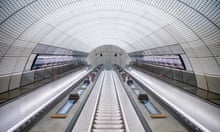
Elizabeth line: Crossrail complete after decades of struggle – a photo essay

Crossrail: Elizabeth line hailed as ‘fit for a Queen’ as it opens

‘These stations are like cathedrals’: Elizabeth line services are ready to roll

Elizabeth line: almost 50 years in the planning for Crossrail – timeline
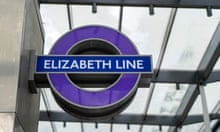
Crossrail: much-delayed Elizabeth line to open on 24 May

‘It has to be flawless’: long wait for London’s Elizabeth line is nearly over
Most viewed.
- RECRUITMENT
- ELECTRIFICATION
- SYSTEMS & ASSURANCE
- PROJECT MANAGEMENT
- PROJECT ENGINEERING
- CASE STUDIES
Crossrail Project management
First caption
Second caption
Third caption
- Client: Crossrail
- Service: Project Management
- Status: Ongoing
- Location: London
Project overview
Integra have been working on the Crossrail project since 2007 and have completed the following tasks:
- Provision of interim project management services to CRL in respect of Liverpool Street and Bond Street Stations.
- Provision of MEP Management services to the crossrail delivery partner for all stations.
- Provision of project management to Aecom, Framework Design Consultant, for the design phase of Crossrail HV Bulk Power system - a £50M scheme to provide non traction power to all stations, portals and shafts as well as tunnel sections.
- Provision of project management services to Aecom, Framework Design Consultant for Farringdon station Oversite development, which consisted of a RIBA D design for a 6 storey commercial office development above Farringdon station.
- Provision of Procurement and project management services to Crossrail project delivery partner for the Invitation To Tender (ITT) for Paddington Crossrail station. Provision of services to manage the MEP aspects of "fit-out" across a number of Crossrail stations.
All case studies
Luton Airport Airport expansion
Emirates Air Line Cable Car
London Underground DLR End of Franchise Audit
London Underground Train Depots
Westfield White City Development
London Underground Paddington-Bakerloo Link
Network Rail Thameslink Programme
London Underground DLR Project BIM
London Underground Royal Victoria Canopies
Network Rail High Speed Telecoms
London Overground Silwood facility
London Underground DLR High Speed Telecoms
Crossrail 2 South Fulham Riverside
London Underground Station Modernisation
London Underground York Road
Crossrail Woolwich Station
Aecom High Speed Railway
CONSULTANCY SERVICES
© 2024 Integra Consultancy Services Ltd
Privacy policy | Cookie policy | Sitemap
Website by VRVE
REGISTERED OFFICE
Bridgewater House, Century Park Caspian Road, Altrincham Cheshire WA14 5HH, UK
T: 07768 040 494
T: 07927 136 829
Cookie policy
We may collect information about your computer, including your IP address, operating system and browser type, for system administration and in order to create reports. This is statistical data about our users’ browsing actions and patterns, and does not identify any individual.
The only cookies in use on our site are for Google Analytics. Google Analytics is a web analytics tool that helps website owners understand how visitors engage with their website. Google Analytics customers can view a variety of reports about how visitors interact with their website so that they can improve it.
Like many services, Google Analytics uses first-party cookies to track visitor interactions as in our case, where they are used to collect information about how visitors use our site. We then use the information to compile reports and to help us improve our site.
Cookies contain information that is transferred to your computer's hard drive. These cookies are used to store information, such as the time that the current visit occurred, whether the visitor has been to the site before and what site referred the visitor to the web page.
Google Analytics collects information anonymously. It reports website trends without identifying individual visitors. You can opt out of Google Analytics without affecting how you visit our site – for more information on opting out of being tracked by Google Analytics across all websites you use, visit this Google page .

CASE STUDY: Crossrail, London
Project: crossrail, london [contracts c610, c620, c660] rjh client: electrical cable and cms installations subcontractor - working for main contractor atc (alstom tso costain joint venture).

CASE STUDY: Office Fit-Out, York for Boxxe
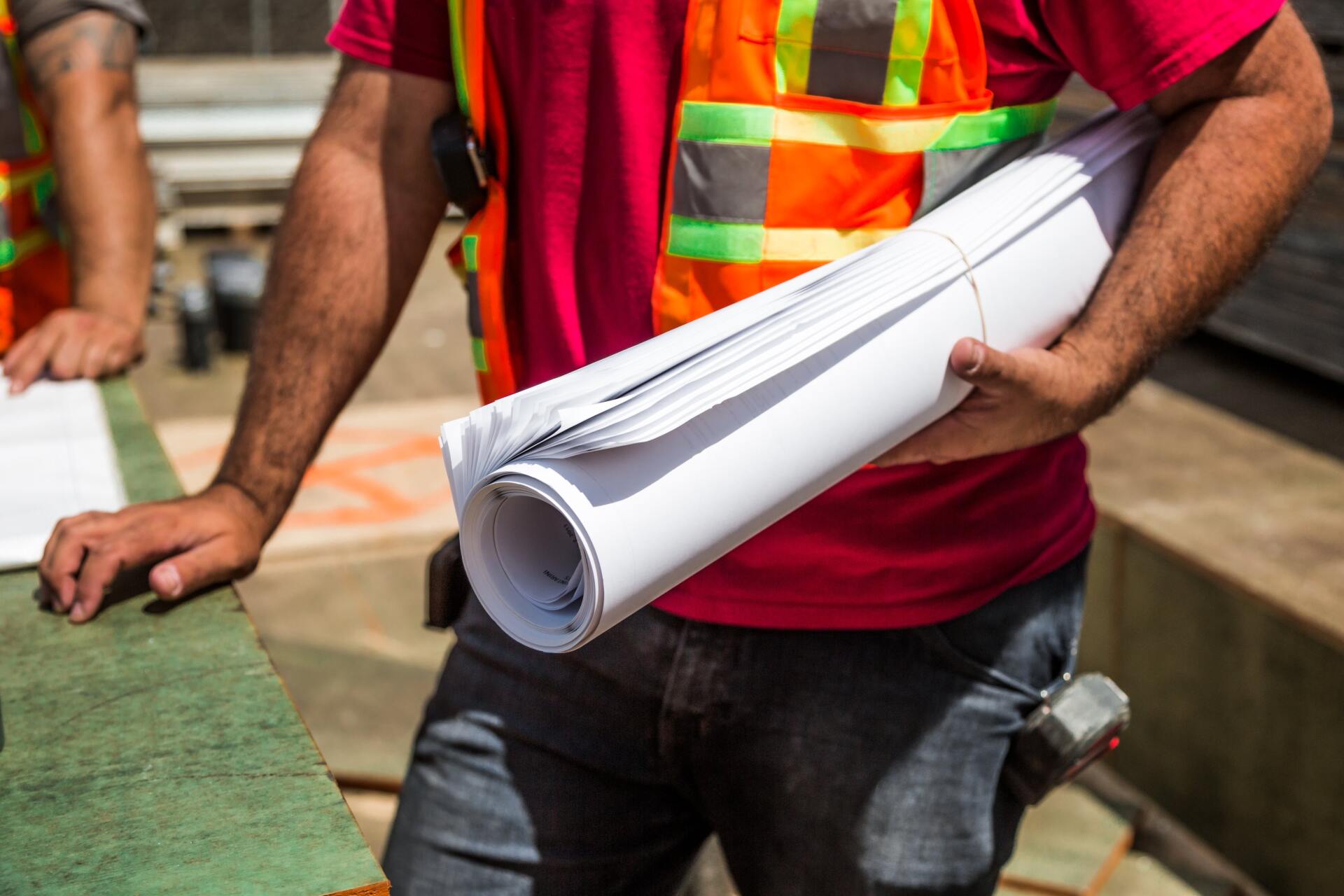
The 20 Most Common Commercial Problems Faced by Subcontractors and How to Resolve Them

Template Documents for Successful Commercial Management
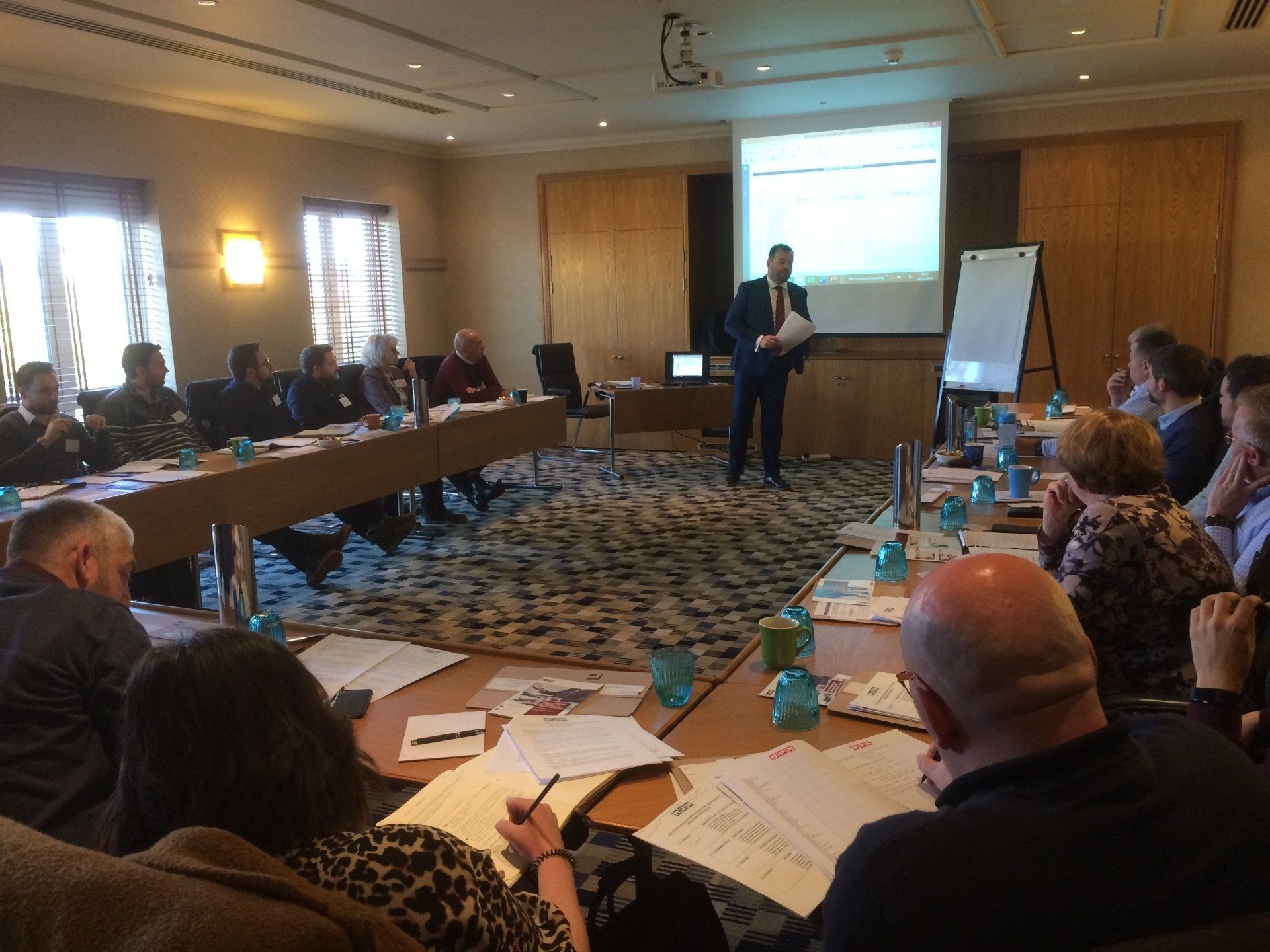
Commercial Awareness Workshop for Subcontractors

Are you aware of the new reverse charge VAT rules?
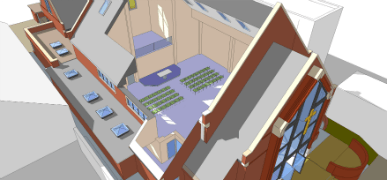
CASE STUDY UPDATE: Re-Development of Driffield Methodist Church

A Short Story About a Main Contractor Who Liked to Levy Contra-Charges on His Subcontractors
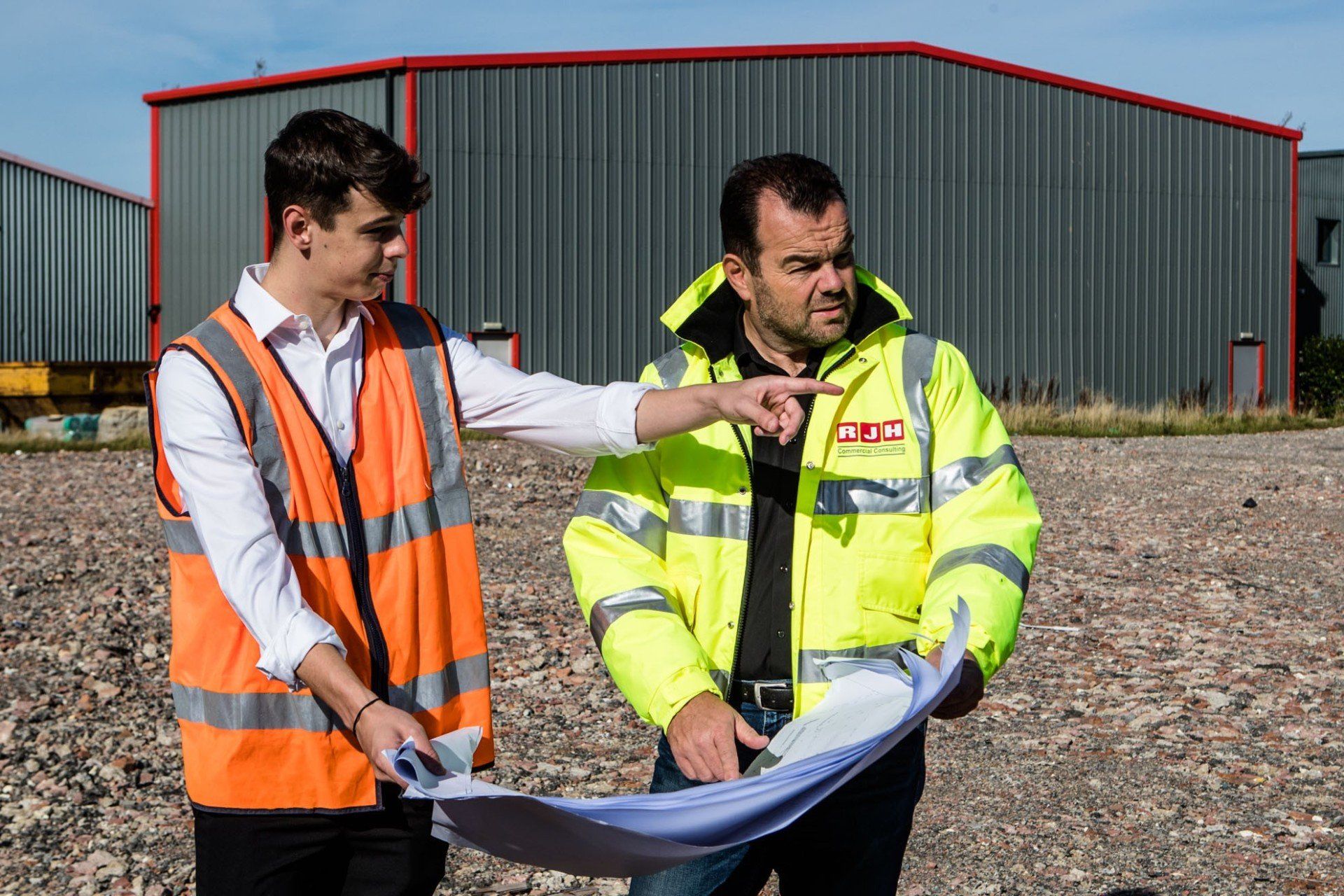
Early Warning Notices v Compensation Event Notices under NEC Contracts

The Power of Adjudication
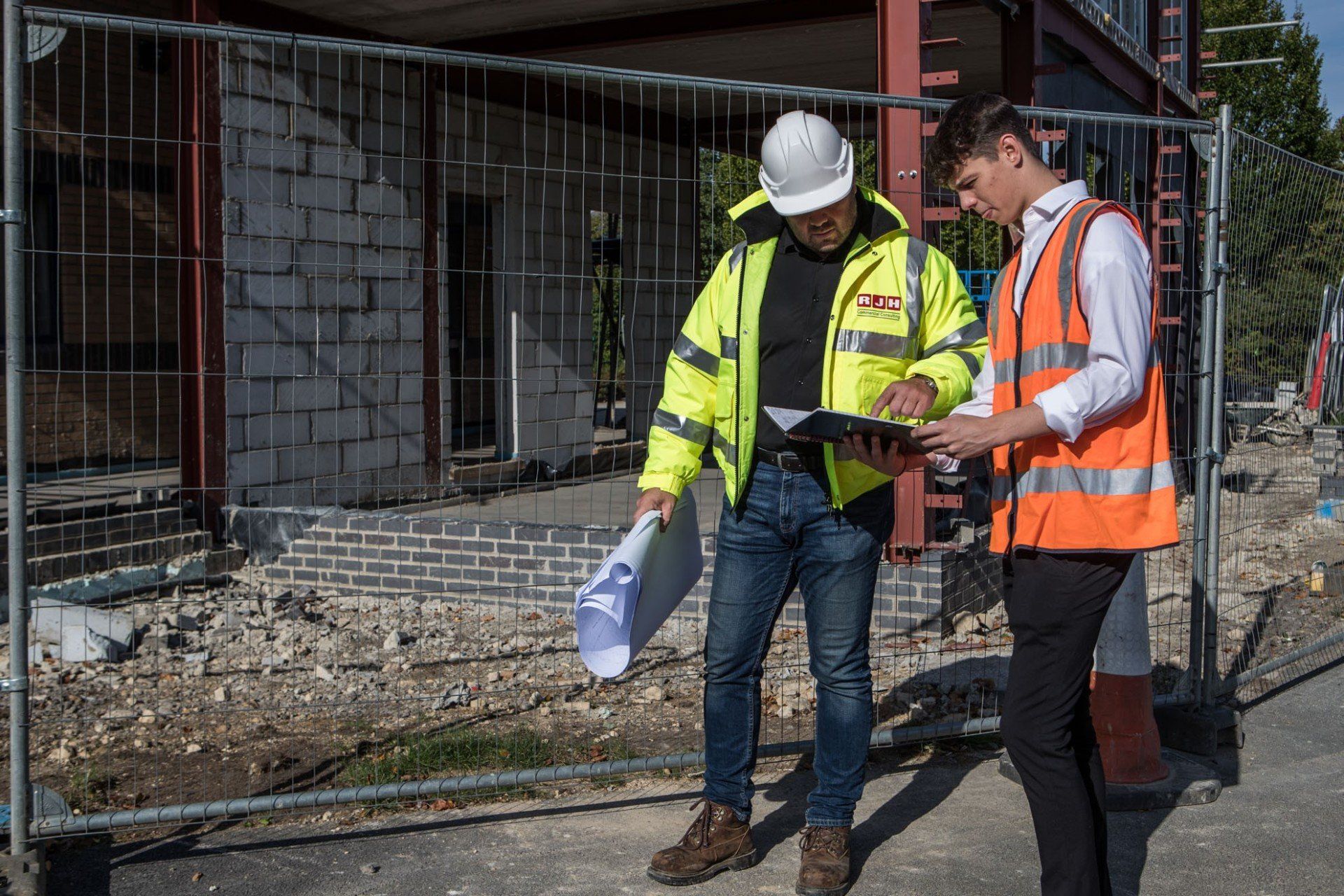
Another 5 Unfair Subcontract Terms to Be Wary Of
Rjh commercial consulting ltd, york eco business centre, amy johnson way, clifton moor, york, yo30 4ag.
All Rights Reserved | RJH Commercial Consulting Registered in England No. 06558452
Privacy Policy
Quick links, contact us, 01347 811155 / 07515 864860 [email protected].

IMAGES
VIDEO
COMMENTS
1 The case study was based on interviews conducted in London in December of 2018 by Prof. Spiro N. Pollalis with Sir ... The Crossrail project will deliver the east-west Elizabeth line railway across London. It will have ... • Decreasing trip times across London. Crossrail brings an additional 1.5 million people within a 45-minute commuting ...
Launched in 2022, Crossrail is a recently built rail system that spans from east to west London and connects Shenfield and Abbey Wood in the east with Reading and Heathrow in the west. Upon completion, the rail system, renamed the Elizabeth line, runs underground through the city centre. It is expected to decrease travel times and bolster ...
London and the South East, historically low rates of house building, increasing modal shift towards public transport, the UK leaving the European Union, and the relative strength of London's reputation among international investors. • These findings give a sense of the perceived impacts of the Crossrail project at this point in time; the full
and budget. The project sponsors made changes to the Board and Executive in response. This paper describes the leadership lessons learned in resetting the project in 2019-2020 and discusses the broader implications for leading complex major programmes. Project leadership: Getting Crossrail back on track Crossrail binder.indb 4 23/03/2023 12:35
Project Development Routemap; Project Initiation Routemap: case studies; New Tube for London - Case study; Project Routemap templates; Thames Estuary Phase 1 - Improving infrastructure delivery ...
The company was entrusted with the task of the project definition work on the Crossrail link and feasibility study of the possible Hackney Southwest London scheme. The initial budget for the project was set at £154 million. ... Case 8: London Cross Rail Project. In: Project Finance. Management for Professionals. Springer, Cham. https://doi.org ...
The capital expenditure of Crossrail needs to be viewed together with the delivery structure for Crossrail. It is important to note that on 1 October 2020, the responsibility for the Crossrail project . moved to sit directly with Transport for London to streamline decision making during the final stages of the programme.
Case study of a complex interorganisational project - Crossrail, London This section presents our case study findings and analysis of the delivery of Crossrail. It begins with the characteristics of the project, the systems integration approach and CRL's plan to open the Elizabeth line.
Case 8: London Cross Rail Project 12. In the nineteenth century, the Regents Canal company highlighted the important role railways will play in London in future. The origination of the idea of Crossrail can be attributed to the 1974 London Rail study. The report was published by the then Greater London Council and Department for Environment.
Crossrail project: procuring infrastructure for London's Elizabeth line. This paper sets out the origins and approach to procurement on Crossrail, the development of the 'six pillars' of procurement and how these were deployed to deliver over £11 billion of capital spend over a 5 year period.
Abstract. Crossrail, the new Elizabeth Line railway project, is now Europe's largest infrastructure project in the works. Categorized as a mega project due to its immense size, substantial cost, and intricate nature, this $21 billion railway endeavor is poised to increase London's train capacity by a noteworthy 10%, significantly enhancing ...
Farringdon station. Photograph: John Zammit/Crossrail Ltd. The coming of the Elizabeth line, formerly known as Crossrail, has long been a background hum.Its opening was formerly promised for 2018 ...
Director, Crossrail Ltd, London, UK Crossrail, the project to deliver the Elizabeth line east-west railway across London, is the largest construction project in Europe. The Crossrail Act 2008 outlined the principles of an execution strategy for delivery of the 10 year programme, which will see the new line fully operational in 2019.
project through a £825 million loan re-paid by the GLA to the Government. As TfL takes on greater financial responsibility for the project, it is crucial that the Committee holds to account Crossrail's senior leaders on behalf of Londoners. For example, any further project delays or overspends could exacerbate pressures in TfL's
Crossrail arguably was first mentioned by name in 1974 in the London Rail Study. The Crossrail Hybrid Bill , external was presented to Parliament in February 2005. These things take a long time.
Crossrail is a completed railway project centred around London. It provides a high-frequency hybrid commuter rail and rapid transit system, known as the Elizabeth line, that crosses the capital from suburbs on the west to east and connects two major railway lines terminating in London: the Great Western Main Line and the Great Eastern Main Line.The project was approved in 2007, and ...
Case study - Elizabeth Line - Crossrail. London's Elizabeth Line, which Ricardo supported between 2012 and 2022, was one of the largest and most complex assessment assignments ever performed by Ricardo Certification.. The Elizabeth Line, known as 'Crossrail' during its construction, connects existing main line routes in Berkshire, to the west of London, and Essex, to the east, via 21kms ...
The £14·8 billion Crossrail project to deliver the new Elizabeth line east-west railway across London has been one of the largest regulated procurements undertaken in the UK in recent times. ... There was a perception in the market that Crossrail was a London-centric project and that firms outside south-east England could not be competitive ...
Integra have been working on the Crossrail project since 2007 and have completed the following tasks: Provision of interim project management services to CRL in respect of Liverpool Street and Bond Street Stations. Provision of MEP Management services to the crossrail delivery partner for all stations. Provision of project management to Aecom ...
As at May 2021, Crossrail Ltd's cost estimate has increased, although remains within the upper limit of the range announced in August 2020. The current cost estimate is between £30 million and £218 million above the current available funding to complete the programme, with a middle estimate of £120 million over.
PROJECT: Crossrail, London [Contracts C610, C620, C660] RJH CLIENT: Electrical Cable and CMS Installations Subcontractor - working for Main Contractor ATC (Alstom TSO Costain Joint Venture) ... CASE STUDIES; CONTACT; CONTACT US. 01347 811155 / 07515 864860. [email protected].
The Crossrail project illustrates just how important the role of the sponsor is in determining the outcome of a major project. There were a wide range of delivery models available for Crossrail and for the good reasons outlined in this report the collective decision was to create a highly capable, autonomous arm's length delivery vehicle.